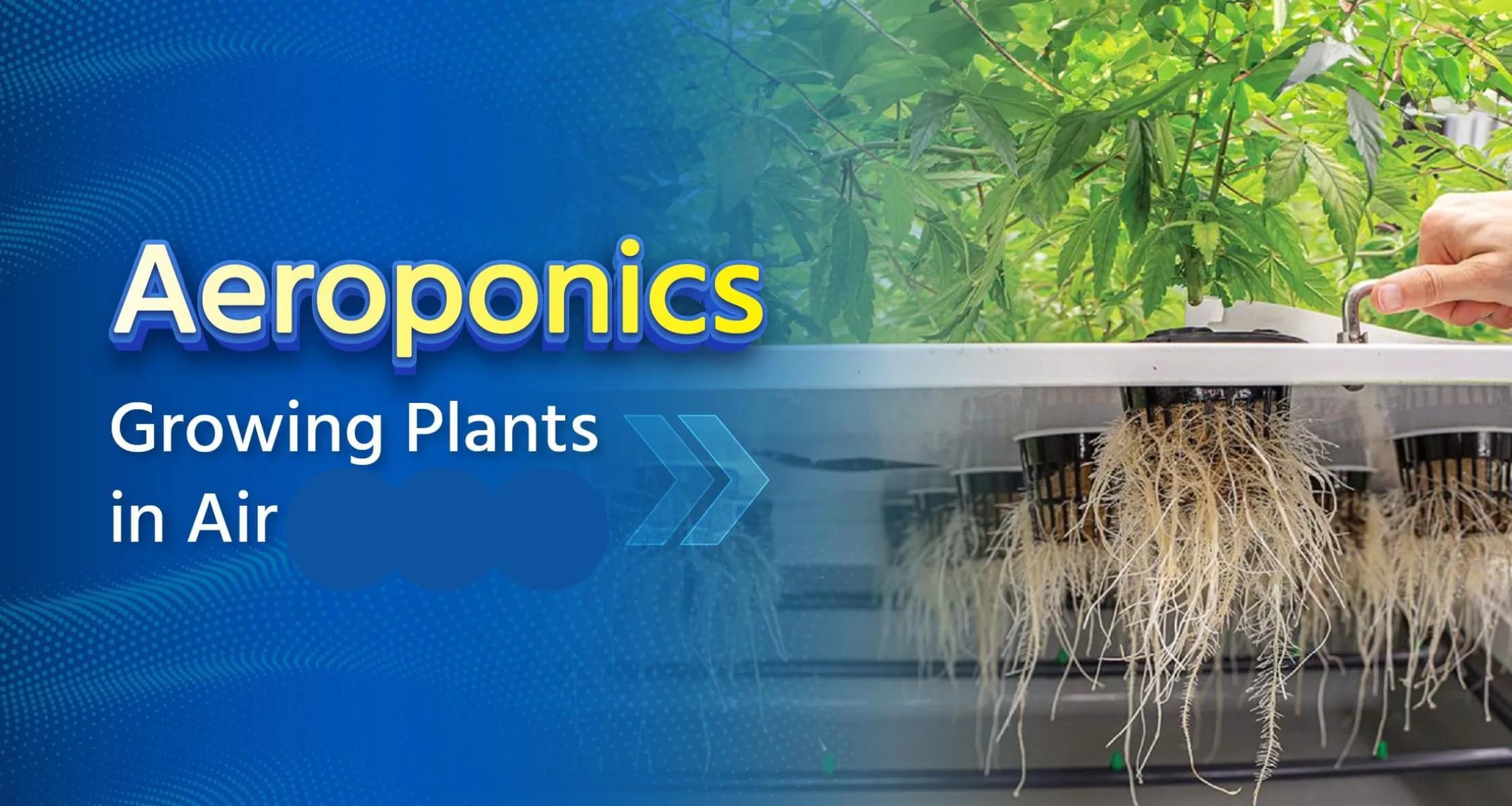Aeroponics Farming: Process and Benefits

Due to the continuously increasing population, potential agricultural land is gradually decreasing. To tackle this problem, aeroponics technology can be a viable solution. With this technique, plants can be grown in the air without soil. Aeroponics systems are highly automated. Monitoring and control can be done remotely using sensors and computer systems. This technology allows precise control over temperature, humidity, and light levels. Here in this post, we will go through more details about aeroponic technology.
What is Aeroponics?
- Aeroponics is a unique technique through which successful cultivation can be achieved in the air. With this technique, plants do not require soil for cultivation.
How is Aeroponics done?
- Aeroponics is a method where plants are grown in a container, tray, or plastic sheet with holes, controlling the environment.
- The roots of the plants are hung in a box.
- A nutrient-rich solution is delivered to the roots via a pump or nozzle.
Plants that can be Cultivated using the Aeroponics Method
- Spinach, coriander, fenugreek, strawberries, tomatoes, cucumbers, peppers, lettuce, banana, basil, and other herbs can be successfully grown using the aeroponics technique. Agricultural scientists have also successfully grown potatoes using this technique.
Benefits of Aeroponics
- Water Conservation: Aeroponic farming saves up to 90% of water compared to traditional soil-based farming. Hence, agriculture is feasible with this technique even in water-scarce areas.
- No Need for Agricultural Land: There is no requirement for arable land to practice farming with this technique. More plants can be grown in a small space. This is especially useful in urban areas where space is limited.
- Plant Growth: Plants in this technique receive more oxygen and nutrients, resulting in faster growth compared to plants grown in soil-based systems.
- Year-round Production: Plants are not affected by weather, pests, or any other external, biological, or non-biological factors in this technique. Crops can be produced year-round without worrying about weather conditions.
- Increased Yield: Due to the higher amount of oxygen and other nutrients in the roots of plants, they develop better, resulting in increased yield. Production can increase by up to 12 times using this method.
- Reduced Risk of Diseases and Pests: Plants grown using this technique are more resilient to diseases and pests, reducing the likelihood of occurrence.
- Cost Reduction: There is a reduction in costs associated with tasks such as tilling, irrigation, etc., in farming.
Challenges of Aeroponics Farming
- High Initial Investment: Establishing an aeroponics system requires specialized equipment and technology, leading to higher costs. This poses a significant challenge for small-scale farmers.
- Lack of Technical Knowledge: Setting up an aeroponics system requires technical expertise and training. Farmers may face difficulties due to a lack of understanding of the technology.
- Risk of System Failure: Aeroponics systems are complex and prone to failure, increasing the risk of losses for farmers.
- Limited Crop Variety: Not all crops can be grown using this technique. Only leafy vegetables, some herbs, and fruits like strawberries and lettuce can be cultivated using aeroponics.
- Dependency on Electricity: Operating an aeroponics system requires electricity. Using this technique in areas with power shortages can be a major challenge.
Where in India is Aeroponics Farming Practiced?
- Aeroponics farming is relatively new compared to other agricultural techniques in India. Therefore, it has not been widely adopted yet. However, the Indian Institute of Horticultural Research (IIHR) in Bangalore has established an aeroponics unit for research purposes.
- Additionally, some private companies and startups are also experimenting with aeroponics technology.
Are you familiar with aeroponics technology? Would you like to use this technology? Let us know your answer through comments. For more information on modern techniques in agriculture, follow the 'Krishi Tech' channel now. Don't forget to like and share this informational post to reach more farmers.
Frequently Asked Questions (FAQs)
Q: What is required for aeroponics?
A: To set up an aeroponic system, you need a reservoir, pump, misters, timer, etc. In this method, the roots of plants are hung in the air and supplied with nutrient elements in the form of mist.
Q: Do plants grow quickly in aeroponics?
A: Aeroponic technology directly provides nutrient elements to the roots of plants while controlling the environment, resulting in rapid plant growth.
Q: What is the difference between hydroponics and aeroponics?
A: In hydroponics, plants are grown in water, whereas in aeroponics, plants are grown in an environment similar to air and mist. Compared to hydroponics, aeroponics requires less water.
Q: Which plants are grown in aeroponics?
A: Only specific crops can be grown using this technique, including potatoes, spinach, cherry tomatoes, lettuce, basil, mint, and bananas.
Please login to continue

Get free advice from a crop doctor
